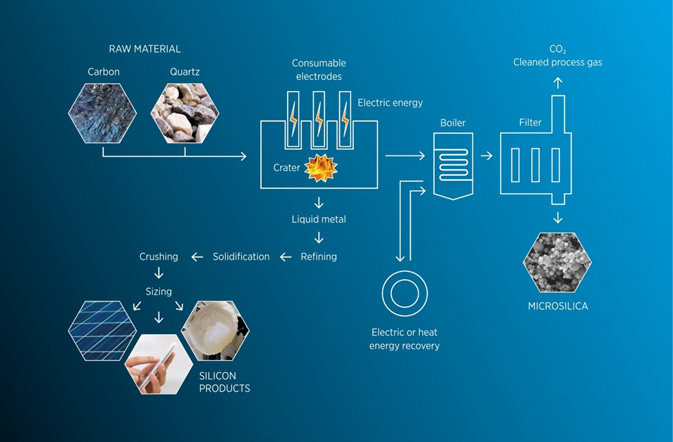(1) Identification
Chemical name: Silica Fume
Synonym: Micosilica
CAS No: 69012-64-2
Molecular formula:
Molecular weight:
(2) Ingredient composition information
Hazardous ingredients: Content CAS No
Silica Fume 69012-64-2
(3) Risk overview
Hazard category
Intrusion route:
Health Hazards: This product is non-toxic to humans. Inhalation of high concentrations can cause mild irritation to the respiratory tract, and it is irritating as a foreign body into the eyes.
Environmental hazards:
Explosion Hazard: This product is flammable
(4) First aid measures
Skin Contact: Remove contaminated clothing and rinse with running water.
Eye Contact: Lift eyelids, rinse with running water or saline, seek medical attention.
Inhalation: quickly leave the scene to fresh air, keep the airway open, if breathing is difficult, give oxygen. If breathing stops, give artificial respiration immediately and seek medical attention.
Ingestion: Drink enough warm water, induce vomiting, seek medical attention.
(5) Fire protection measures
Hazardous properties: Reacts violently with calcium, cesium carbide, chlorine, cobalt fluoride, fluorine, iodine trifluoride, manganese trifluoride, rubidium carbide, silver fluoride, and potassium-sodium alloys. The dust reacts with flames or contact with oxidants and is a moderate risk.
Hazardous Combustibles: Silica
Extinguishing method: Use dry powder and dry sand to extinguish the fire. Water is prohibited. Carbon dioxide is prohibited.
(6) Emergency treatment of leakage
Emergency treatment: isolate the leaked contaminated area and restrict access. Cut off the source of ignition. It is recommended that emergency personnel wear dust masks and general work clothes. Small spills: Avoid dust, collect with a clean shovel in a dry, clean, covered container. Large Spills: Wet with water, then divert for recovery.
(7) Handling and storage
Operation precautions: closed operation, local exhaust. Operators must undergo special training and strictly abide by operating procedures. Keep away from fire, heat sources, and smoking is strictly prohibited in factory premises. Use explosion-proof ventilation systems and equipment. Avoid fugitive dust. Avoid contact with oxidants. When handling, it should be lightly loaded and unloaded to prevent damage to packaging and containers. Equipped with the corresponding variety and quantity of fire fighting equipment and leakage emergency treatment equipment. Empty containers may be harmful residues.
Storage Precautions: Store in a cool, dry, well-ventilated warehouse. Keep away from tinder heat sources. The packaging is required to be sealed and not in contact with the air. It should be stored separately from oxidants, etc., remember to mix storage. Use explosion-proof lighting and ventilation facilities. Prohibit the use of mechanical equipment and tools that are prone to sparks. Storage areas should be provided with suitable materials to contain spills.
(8) Exposure control/personal protection
Occupational Exposure Limits
China MAC (mg/m3): no standard
Former Soviet Union MAC (mg/m3): no standard
TLVTN: ACGIH 10 mg/m3
TLVWN: No standard
Monitoring method:
Engineering control: closed operation, local exhaust.
Respiratory protection: Generally no special protection is required. However, it is recommended to wear a self-priming filter dust mask in special circumstances.
Eye protection: Generally, no special protection is required, and chemical safety glasses can be worn when exposed to high concentrations.
Body Protection: Wear general work protective clothing.
Hand Protection: Wear general work protective gloves.
Other protection: work clothes, caps, etc. should be cleaned regularly. After work, take a shower. Practice good hygiene.
(9) Physical and chemical properties
Physical State: Powder
Molecular formula: SIO2
Color: grey or black
PH: not available
Melting point: 1,580 C
Boiling point: Not applicable
Vapor pressure: Not applicable
Explosion Upper limits: Not available
Explosion Lower limits: Not available
Solubility in water: Insoluble
(10) Stability and reactivity
Chemical stability: stable.
Conditions to avoid: no specific data
Incompatible materials: Reactive or incompatible with the following materials: oxidizing materials, acids and alkalis. Reactive with Hydrofluoric acid (HF) and Nitric acid (HNO3).
(11) Toxicological information
Acute Toxicity: Elemental silicon, considered biologically inert.
Irritant:
Sensitization:
Mutagenicity:
Teratogenicity:
Carcinogenicity:
(12) Ecological information
Ecotoxicity: No known significant effects or critical hazards.
Biodegradability: no data available
Non-biodegradability: no data available
Other harmful effects: no data available
(13) Disposal
Type of waste: hazardous waste
Disposal method: Recycle if possible. Or dispose of in safe burial.
Disposal Precautions: Please refer to relevant national and local regulations before disposal.
(14) Shipping Information
Land transport:
Not classified as a dangerous good under transport regulations
Sea transport:
Not classified as a dangerous good under transport regulations
Air transport:
Not classified as a dangerous good under transport regulations
(15) Regulatory information
Silica Fume MSDS PDF Download: https://microsilica-fume.com/wp-content/uploads/2022/08/Silica-Fume-msds.pdf




